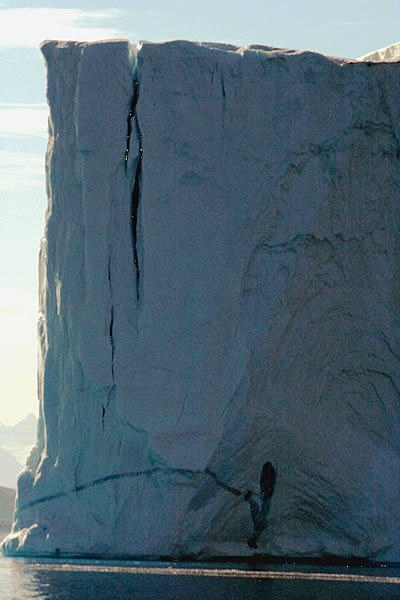
Figure 3.
Ice that enters the ocean typically forms cliffs that then fracture, as shown for this iceberg with an approximate 60 m cliff face, in Scoresby Sound, Greenland. Higher cliffs have larger stress imbalances and so are more likely to break rapidly. Ice cliffs of ~100 m height appear to be near the highest that can support themselves. Retreat in West Antarctica, particularly at Thwaites Glacier, could produce taller cliffs that would fail rapidly, accelerating the retreat and its contribution to sea-level rise.